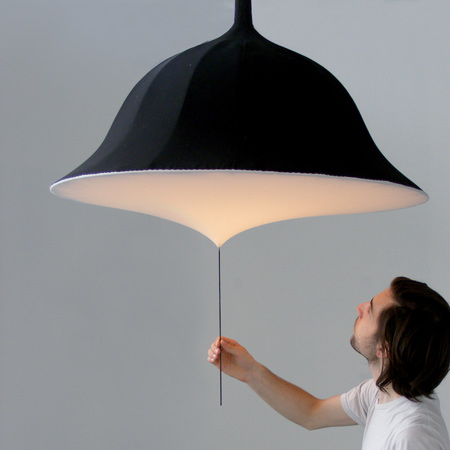
[D3] Contest winners at imm cologne 2010
Cologne 2010: young designers Remi Bouhaniche (above), Jessica Hansson and Julien Renault shared first place at this year's [D3] Contest, an international competition for young designers organised by imm cologne.
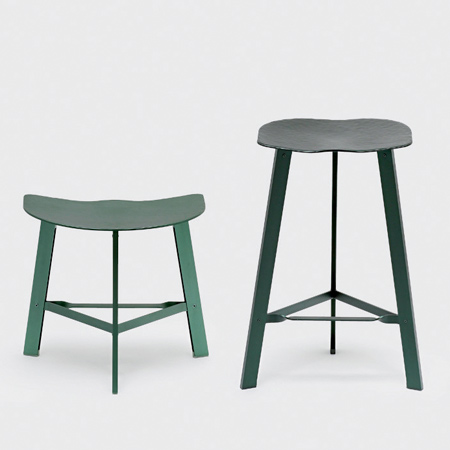
Above and below: First prize - Hand forged aluminium series by Julien Renault. My aim was to source inspiration from the archetypal processes and techniques of forging steel and apply them to aluminium. The family combines standard aluminium extrusions with elements made by using forging skills and details. In order to obtain a rather rough texture usually found in steel, the aluminium parts have been sand gritted and finally anodised. These objects are a dialogue between industry standards and near-craft techniques.
The winning projects were Hand forged aluminium series (above) by Julien Renault, Cabinet filled with shadows (below) by Jessica Hansson and Etirement (top) by Remi Bouhaniche.
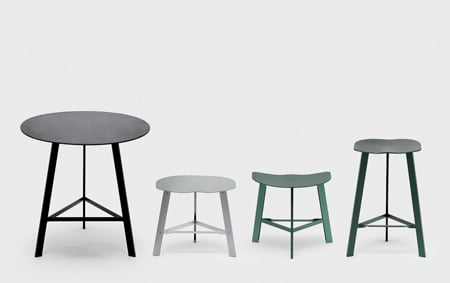
The three winners were interviewed in Cologne by Dezeen editor-in-chief Marcus Fairs as part of the Dezeentalks at [D3] Design Talents series, which will be published as short movies on Dezeen in the near future.
The competition saw 521 young designers from 43 countries take part, submitting a total of 649 ideas. 29 were exhibited in Cologne last week and from those the winning three designers were chosen.
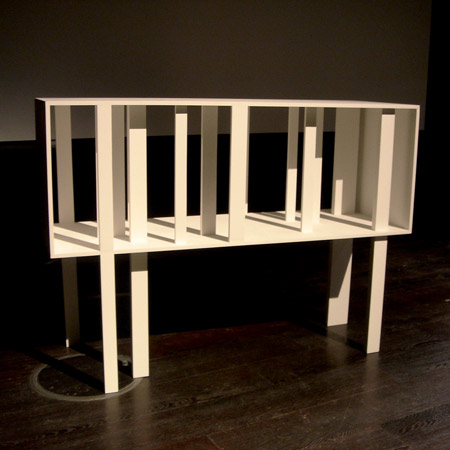
Above: First prize - Cabinet filled with shadows by Jessica Hansson. A sculptural piece of furniture, which picks up the light from surrounding light sources and gives it a new pur- pose in the cabinet. The slats inside the cabinet transform the light into a shadow play of graphical patterns on the surfaces around. Near the window houseplants create beautiful figures in the cabinet. Fill it with books, magazines, collections or just leave it empty and let it become the jewellery of the room.
The [d3] Contest aims to give young designers an opportunity to present their ideas for the furniture, lighting, home textiles and accessories to an international audience.
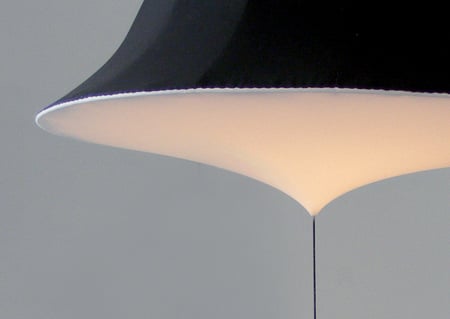
Above and top: First prize - Etirement by Remi Bouhaniche (see our earlier story). I shaped Etirement on the principle of an organic body composed by skin and skeleton. In pulling a rod, the intensity of the light can be reduced and raised according to the distortion of the fabric membrane. In order to produce a flowing and expressive movement, I concentrated on a very precise and harmonious gesture focused in one point. In this way, the lamp becomes a temporary shape creating a poetic time from daily action.
Here are all 29 exhibited projects, with captions provided by the designers.

Above: Wooden carpet by Elisa Strozyk (see our earlier story). Wood is one of the most original materials. Here the familiar material appears in a surprisingly flexible form, its rigidity becomes soft and flowing. The wooden carpet can lie flat on the floor, but it can also be playfully positioned in the room, and thus becomes an object in its own right, independent of its original function.
See last year's competition winners and exhibitors in our earlier Dezeen story.
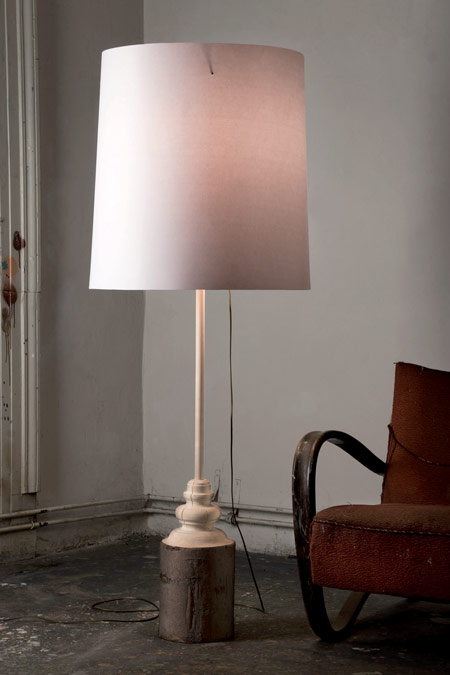
Above: Love by Klára Šumová (see our earlier story). The main idea is to introduce the material wood in different stages of the work progress. The stand is made of a bark covered trunk, which emerges into a clear baroque curve. This raw piece of wood is complemented by a machine-cut stick and a simple lighting construction. The whole concept concludes with adding a huge paper shade with the fine structure of bark.
See all out stories about Cologne 2010 in our special category.
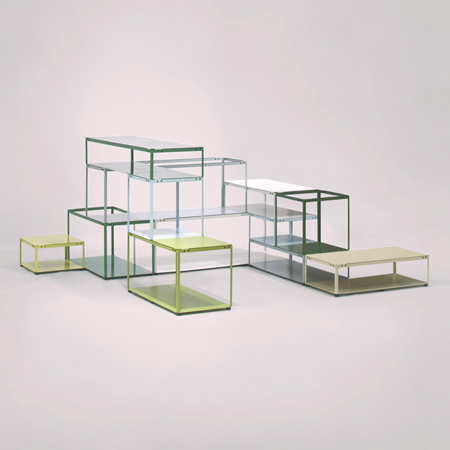
Above: Crate shelf by Martin Born. The modules of the Crate shelf can be composed in full freedom of alignment. This three-dimensional predicate uncloses applications inaccessible to the typological wall shelf. Without loss of use value, choreographed “movements” and sophisticated access paths are as easily realised as more ordinary setups. Together with its nuanced palette of colours, the system can be applied as an active design element.
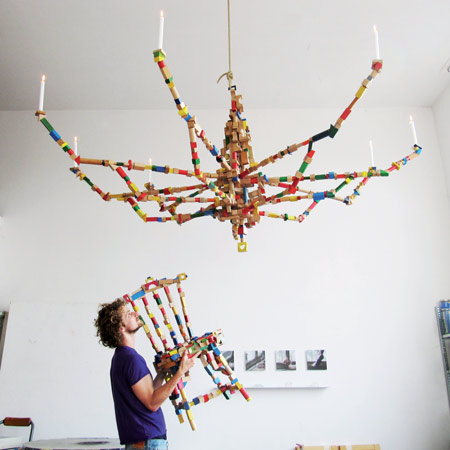
Above: Brickseries by Pepe Heykoop (see our earlier story). The Brickchair is my interpretation of a drawing called “all the chairs I sat on” by James Gulliver Hancock. It is drawn in a rather childish way but with an eye for every detail. As children most of us built their world with LEGO or wooden bricks. An inside construction now allows you to create nearly everything you can think of. The bricks become a material to work with. Imagine .
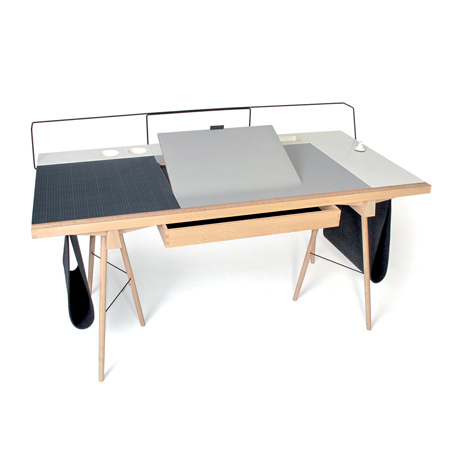
Above: Homework by Robin Grasby. Designed for the home office/studio, Homework is an adaptable system which allows the user to customise every aspect of his workspace. By selecting everything from surface size and materials to storage and accessories the user can create an environment as rich and specifically personalised, or as simple and generic as he requires.
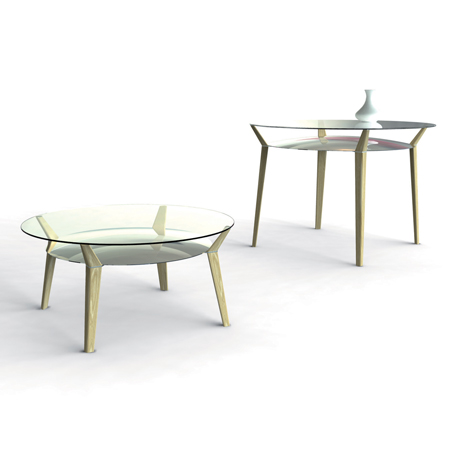
Above: WARP by kieser + spath. The WARP table turns lingering at the table into a special experience. Everything that is on and around the table is reflected in a domed mirror, which is mounted beneath the glass tabletop. The interplay between material objects, light and shade opens up new perspectives and changes the way people act at table. The theme of distorted perception is thrown into particular relief by contrast with the simplicity of the table’s design.
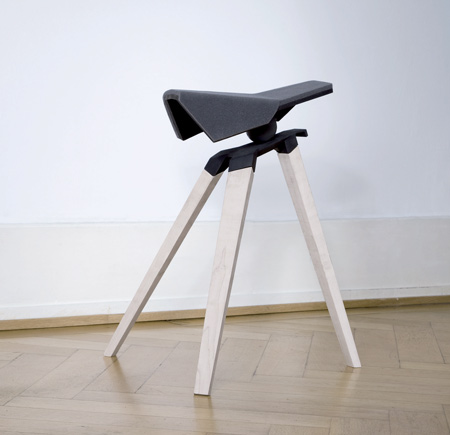
Above: Ulm TriLas by Marc-Samuel. TriLas is to be seen as a contemporary interpretation of ergonomics and design in the everyday world of the workplace. The stool supports and challenges people working in a seated position and turns their occupation into an active and deliberate act. Its statically technical appearance contrasts with the playfully active feeling one gets when sitting on the stool, an effect achieved by mounting the seat on an elastomer ball.
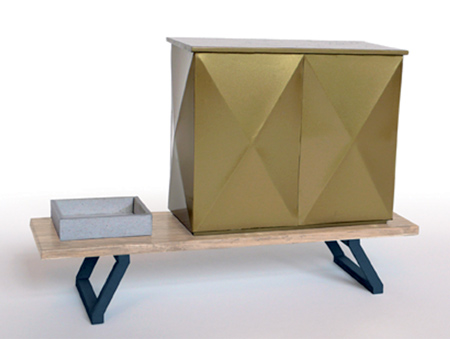
Above: Tauber-Cabinet by Sebastian Herkner. The inspiration for Tauber-Cabinet, a symbiosis of bench and sideboard, is to be found in ventilation shafts and industrial claddings made of folded sheet metal. The diagonal folds both ensure stability and create a multi- faceted surface at the same time. The reflections in the warm brass surface bring together the piece of furniture and the room in which it is placed, thus contrasting with the essentially closed, industrial metal structure.
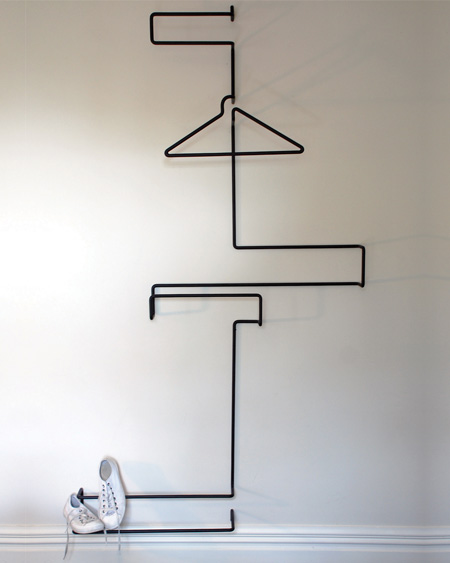
Above: xy+z suit rack by Emma Fox Derwin / Nigel Groom. The contemporary man’s xy+z suit rack is elegant, funny and modern, inspired by the traditional men’s valet clothing stand. Our suit rack accommodates your entire ensemble: jacket, shirt, tie, belt, pants and shoes. A single line, hand formed in three axes from steel, powder coated with a light texture to prevent clothes from slipping off, the piece folds up for easy assembly, disassembly and transport.
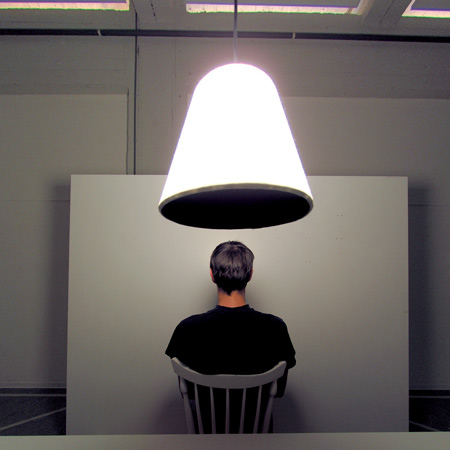
Above: Mourning Light by Adam Farlie. Mourning Light is an exploration into perceptions of archetypes whose understanding is entirely based on predetermined expectations. One is instantly aware of the void underneath Mourning Light. One can put his hands up into the blackness and realise that the essence of the light – the bulb – is unseen and absent. The light takes on an uncanniness heightening our sensory perception of its form.
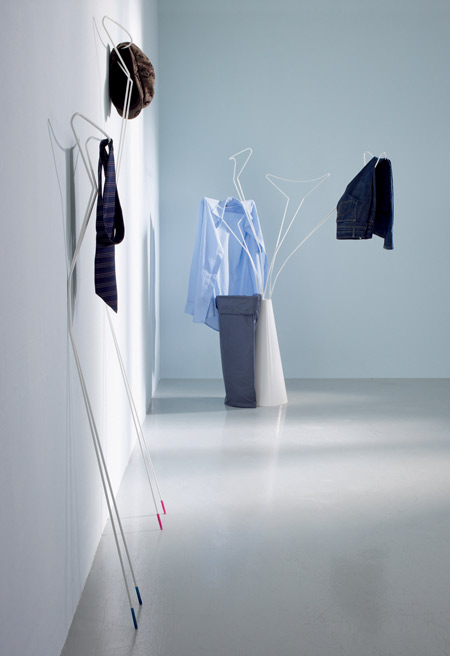
Above: Siluet by Stephanie Estoppey. Siluet’s form suggests a sketched outline and plays, in a fanciful way, with the chaos of clothes on the chair. The function of the chair back is taken over by a structure reminiscent of the shape of a clothes hanger. They enable clothes both to be organised and to be thrown informally over them – an alternative solution for storing clothes that have just been worn.
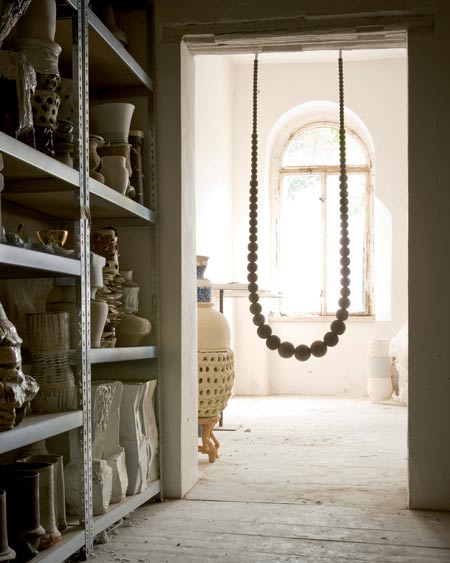
Above: Schaukelkette by Johanna Richter. An accessory for the home that is also a fashion item. Schaukelkette is reductionist and subdued, but not too subdued: an item of jewellery for the home. The inspiration for this design came from the antiphonies between an object in the home and a piece of jewellery. A swing- cum-necklace, a new way of looking at what furniture is all about.
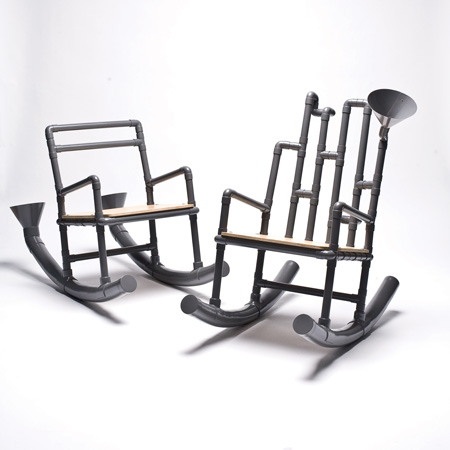
Above: Rocking on the Beach by Studio Joon & Jung. For the first time in the history of the earth, the urban population is larger than the rural population. But living in a city might cause a nostalgic feeling for nature. On the one hand, the plastic pipe shape creates a natural seashore sound. And on the other hand, the shape of the chair entirely made out of pipes is reminiscent of an electronic circuit or urban city landscape. Both, sounds and figures might fulfill your nostalgia for nature and urban life.
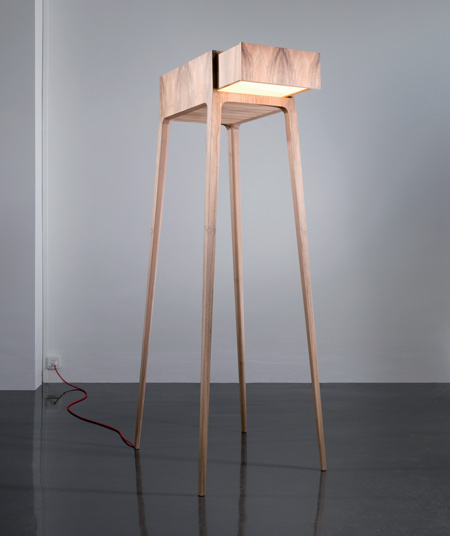
Above: AT-AT Walker by Lifegoods. We are fascinated by wood and its codes. We pick up antique details of cabinetwork and give the object a look which is totally contemporary due to its dimensions. We explore the limits of the wooden piece by expanding its legs and by creating a drawer that functions as a light dimmer. The lamp is like a science fiction object but characterised by the warmth and the preciousness of woodwork.
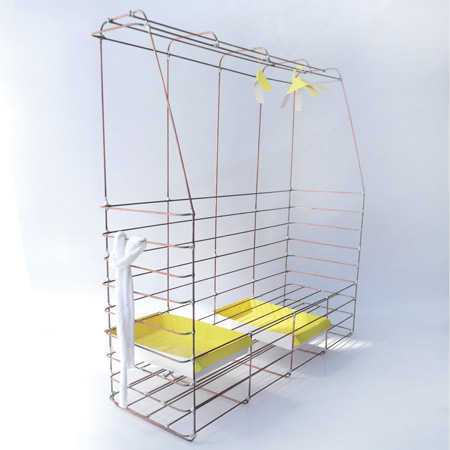
Above: Allotment stories/wardrobe by Kilian Schindler. The shape of the wardrobe is reminiscent of climbing supports in the garden. But in the case of allotment stories/wardrobe, it is items of clothing and accessories that “overrun” the powdercoated steel framework. Boxes in a variety of materials can be added to complement the wardrobe. There, even the smallest pieces of equipment can find a home.
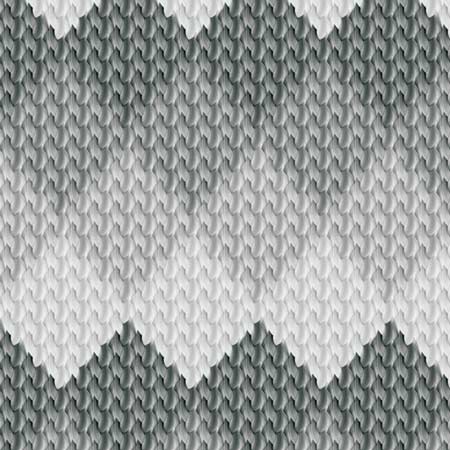
Above: Knitted Room by Chae Young Kim. Lines, generated as fine as possible by 2D vector graphics, were re-interpreted as threads to be braided and knitted onto hard surfaces. They give a warm and cosy feeling of knitted and felted fabrics; printed in grey scale the light and shadow effect adds a 3D illusion. Further- more, an opaque heat-sensitive ink will increase the phantasmal vision revealing partly and randomly, as it gets warm from sun or indoor light.
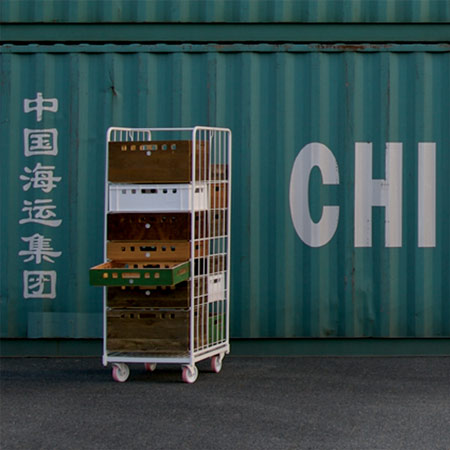
Above: Karsten/Rolf by Robert Haslbeck. The Karsten Box Collection, a series of stackable boxes in a standard European format is inspired by its plastic cousins. The boxes, traditionally made from recycled wood, tell a story from a previous life with each surface and thus become multi-faceted individual pieces. The Rolf Trolley makes the Karsten Collection mobile. The two together bring the flexible stockroom into the home and the workplace.
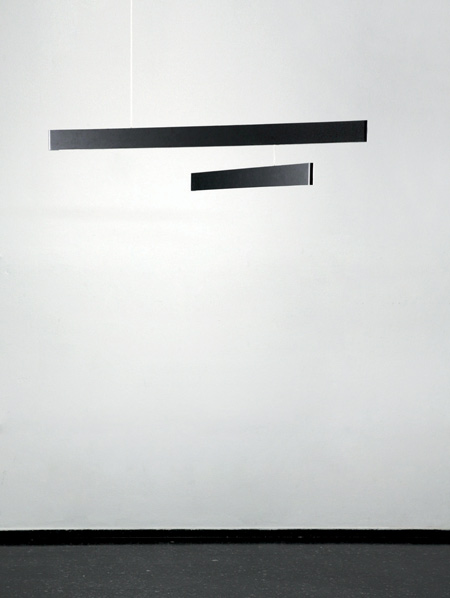
Above: Riga by Markus Maurer. This piece of work began with the question: How can balance be shown and experienced in an object? The result is the RIGA lamp. A free-moving LED pendant lamp based on the principle of a mobile. Particularly striking is the way in which it is suspended with only one wire. The lamp moves under the influence of the conditions and external circumstances of the place where it hangs. It is a lamp that invites one to reflect, relax and dream.
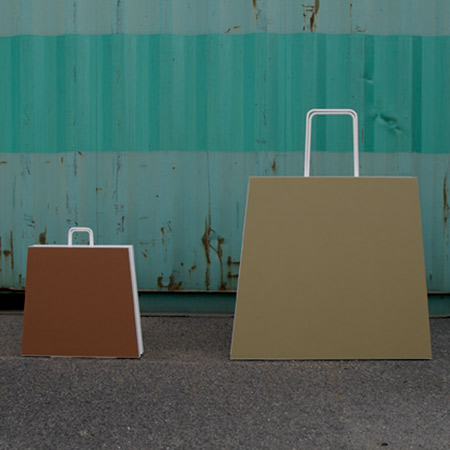
Above: Under-Koffer by Robert Haslbeck. Godfather and inspiration for Under-Koffer was the wallpapering table. The result is a range of tables with obvious advantages: easy to carry around, quick to set up, providing maximum usable surface area and the possibility of being stored in a minimum of space.
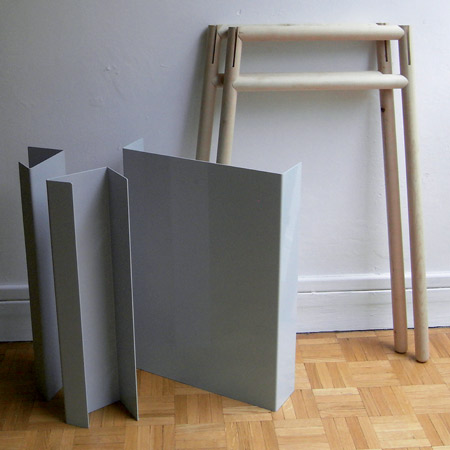
Above: Collection Ratio, Quart table by David des Moutis. During my visits to a sheet metal workshop for the development of another collection called PLI, I noticed that the offcuts were growing in number. This observation was the starting point as well as the aim of this new collection: to think of a new table collection without producing any offcuts.
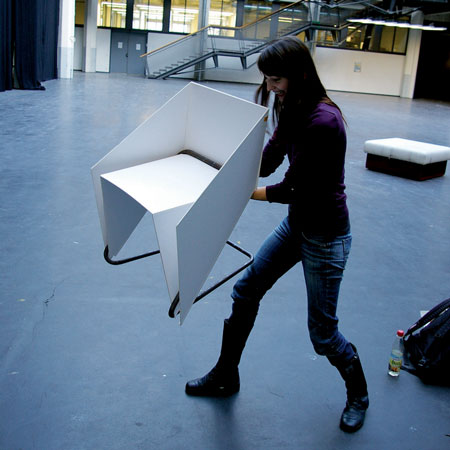
Above: PÁP by Martha Schwindling. PÁP is a chair with a shape derived from a folded sheet of paper. A key element of the entire design process was not to lose sight of this feature. Though the seat is therefore very thin and seems very delicate, it is held firm thanks to the folding and is surprisingly strong. The upper part above the enclosed seat is a free-swinging framework in tubular steel, which serves as an additional graphic element in the design.
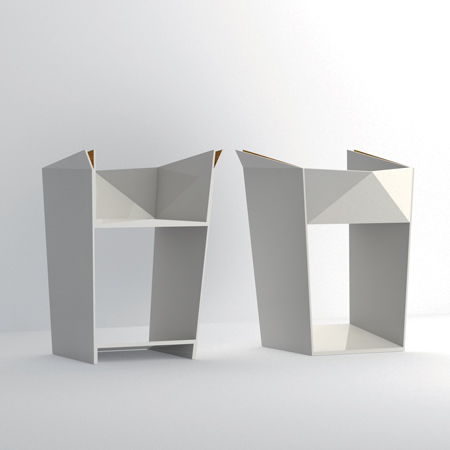
Above: Step Chair by Yi Hsuan Lin. By a simple action of flip over, a new function of the chair is introduced. Not only does this chair serve as a sitting furniture, it also serves as a ladder for high level access. When the chair is flipping over, it approaches the ladder- shape and has the ability to remain stable.

Above: Gand Centra by Sanna Lindström and Sigrid Strömgren. During a trip we got lost on our way to the Central Station. At a newsstand we found a pop-up map which helped us to find our way. After years the map was rediscovered and helped us once again to find orientation, now through its ingenious construction. GRAND CENTRAL is an expandable table that transforms in a spectacular and beautiful way - from a space saving occasional table to the central piece of every room.
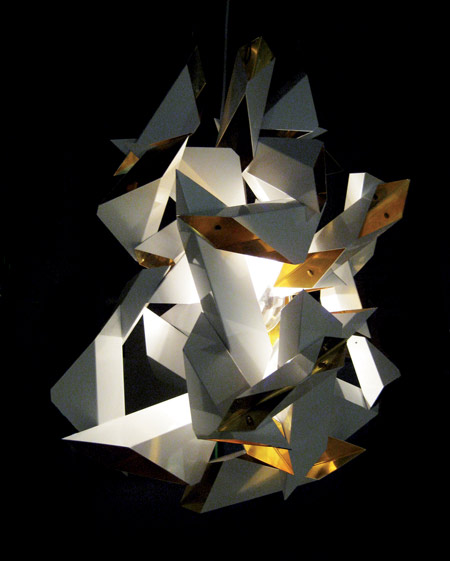
Above: Flamenco by Johanna Körberg. Flamenco is my inspiration. Flamenco as a dance; the movement and the powerful expression, how one person can express so much feeling and bring atmosphere to a room. I wanted to catch this movement – to capture this very moment of a strong emotion.
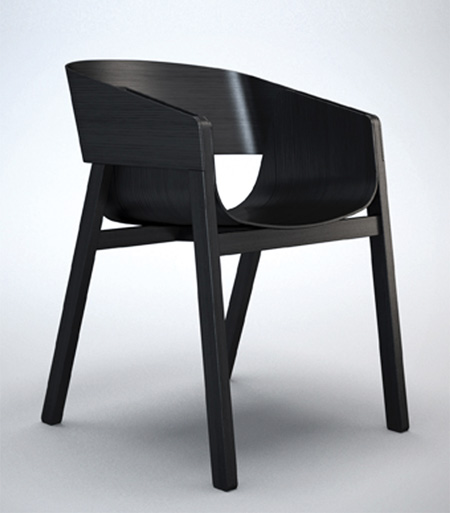
Above: Berta by Alexander Gufler. In this shell arm chair, the legs are held firm by the curved seat and back and, together with the structural support beneath, form a stable unity. The junction between the two curved surfaces and the legs creates the armrests. The arm chair impresses with its external form that has been kept simple and because it is comfortable to sit in. Attention has also been paid to the ease and cost of production. Berta is made from solid ash and ash-face plywood.
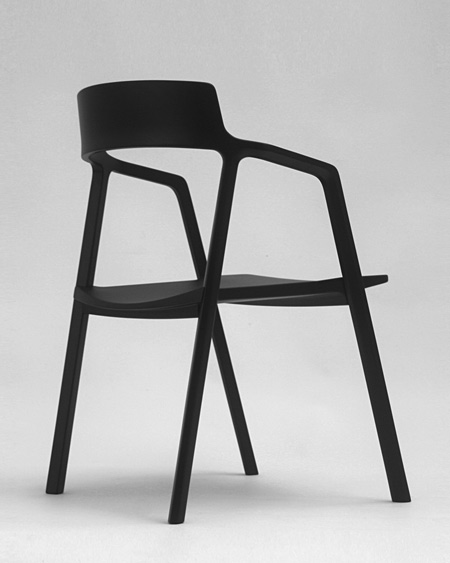
Above: Axel by Alexander Gufler. The idea for this chair sprang from a notion of combining traditional furniture construction with CNC router technology. The Axel chair is made in solid maple. The steam bent seat and backrest are shaped using CNC technology and are then put together with the arms and legs to create the finished chair.